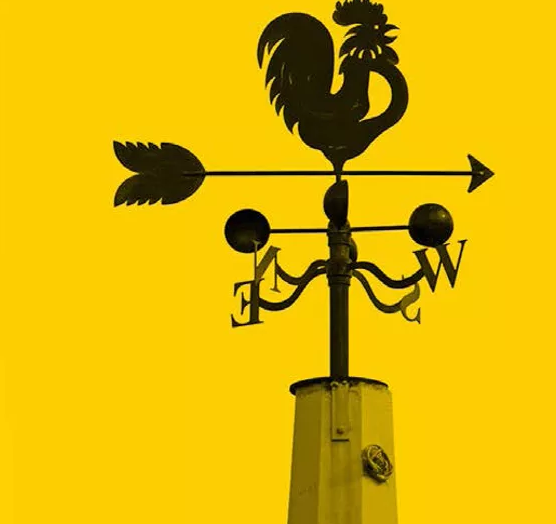
Brick-and-mortar is back, and speedy, seamless, sensory experiences are in demand
In 2016, consumers will crave more authentic interactions with brands on every level. Whether it’s customers returning to brick-and-mortar stores for more personal engagement or wanting to experience brands through multichannel, multisensory experiences, consumers are responding to storytelling and incorporating products and services into their lives in unprecedented ways. Landor, one of the world’s leading strategic branding and design firms, analyzed innovations, consumer behavior, the changing market, and attitudes from a multitude of industries and global locales to determine the leading trends for 2016.
Stuart Sproule, Landor’s President of North America, commented, “In today’s world, whether marketers put the latest spin on an established practice or develop a first-ever innovation to capture consumers, they face the challenge of keeping brands agile: continuously evolving the brand to be relevant while staying true to its essence. Many of the 2016 trends reflect ways to navigate this agility paradox by encouraging brands to be adaptive, principled, open, responsible, global, and multichannel.”
Here are Landor’s key trends for 2016:
Offline is the new online: Online shopping threatened to eradicate the traditional retail experience. However, customers once again want in-person interactions in the real world. Brands are responding by returning to brick-and-mortar stores, combining the service consumers expect from a physical store with the information, flexibility, and customization they get through digital. Even historically online brands are believers. Amazon just opened its first bookstore in Seattle, where customers can browse books and also read customer reviews.
Multichannel, multisensory brands: Brands will need to think about the entire customer experience as they craft brands. In addition to logo design and look and feel, companies will explore all the senses to create unique worlds for consumers. Four Seasons, for example, uses an air system to diffuse custom scents throughout its properties. Virgin relies on personalized screens, on-demand food and beverage ordering systems, and iconic purple lights to ensure its flying experience is like no other airline.
Employees as the new marketing campaign: Catchy slogans and entertaining commercials used to be enough for brands to make an impact. Now, customers care as much about employees’ opinions and how companies treat employees as they do about the services a company offers. In 2016, brands will place more emphasis on training their employees to be brand ambassadors. They will also strive to be more vocal about publicizing the efforts and services they provide to create a positive work experience for employees. REI recently announced #OptOut, an initiative where it is closing all stores on Black Friday and paying employees to spend time outside reconnecting with family and friends.
Life in the very fast lane: Today, consumers want convenient, seamless experiences faster than ever before. Brands will create quicker ways to serve customers. Starbucks permits customers to order ahead so their coffee is waiting for them at the counter, while Taco Bell’s app makes fast food even faster by enabling online ordering and pickup.
Packaging tells a story: Packaging will go beyond the logo, as it becomes an extension of the product, revealing its character, telling its story, and making a real connection with consumers. Scholz & Friends created a new packaging concept for watchmaker Festina in which Festina’s waterproof timepieces would come sealed in bags of water. Other concepts have been developed such as the much talked-about idea for the Nike Air shoe line, placing the shoes in see-through air cushioned packets that make them appear to literally float on air. We expect to see concepts like these become reality in 2016, moving from innovative ideas to engaging packaging that helps convey brand truths.
In addition to these overall brand trends, here’s what to look for in three key industries:
Big banks will rebrand: In an oversaturated market, banks have been unable to differentiate. Look for these institutions to reevaluate and restructure what their brands stand for as they strive to be more human and trustworthy. UBS launched a new business strategy focused on responsible wealth management; its brand identity—“For some of life’s questions you’re not alone. Together we can find an answer”— speaks to the bank’s approach.
Food as identity: Consumers are beginning to link their personal identity to the food they eat. They talk about food and post food photos online, using even everyday food experiences as a powerful expression of who they are and who they want to be. Brands will focus less on promoting calorie count and more on transparent manufacturing processes to tell an authentic story. Despite selling food with generally high caloric value, Shake Shack has been gaining new followers and reaping national praise for its sourcing of ingredients.
Hotel chains will create exclusive experiences: Continuing to capitalize on the desire for authentic and personalized local experiences to compete with Airbnb, hotel brands will offer adaptable and locally focused options for customers who desire a genuine, cultural experience. Marriott now has a series of smaller hotels under its Edition chain, providing a boutique, exclusive alternative. Hilton has established its Canopy collection of hotels in the heart of culturally significant areas, weaving the style and atmosphere of the locale into the design, energy, and feel of the hotel.


